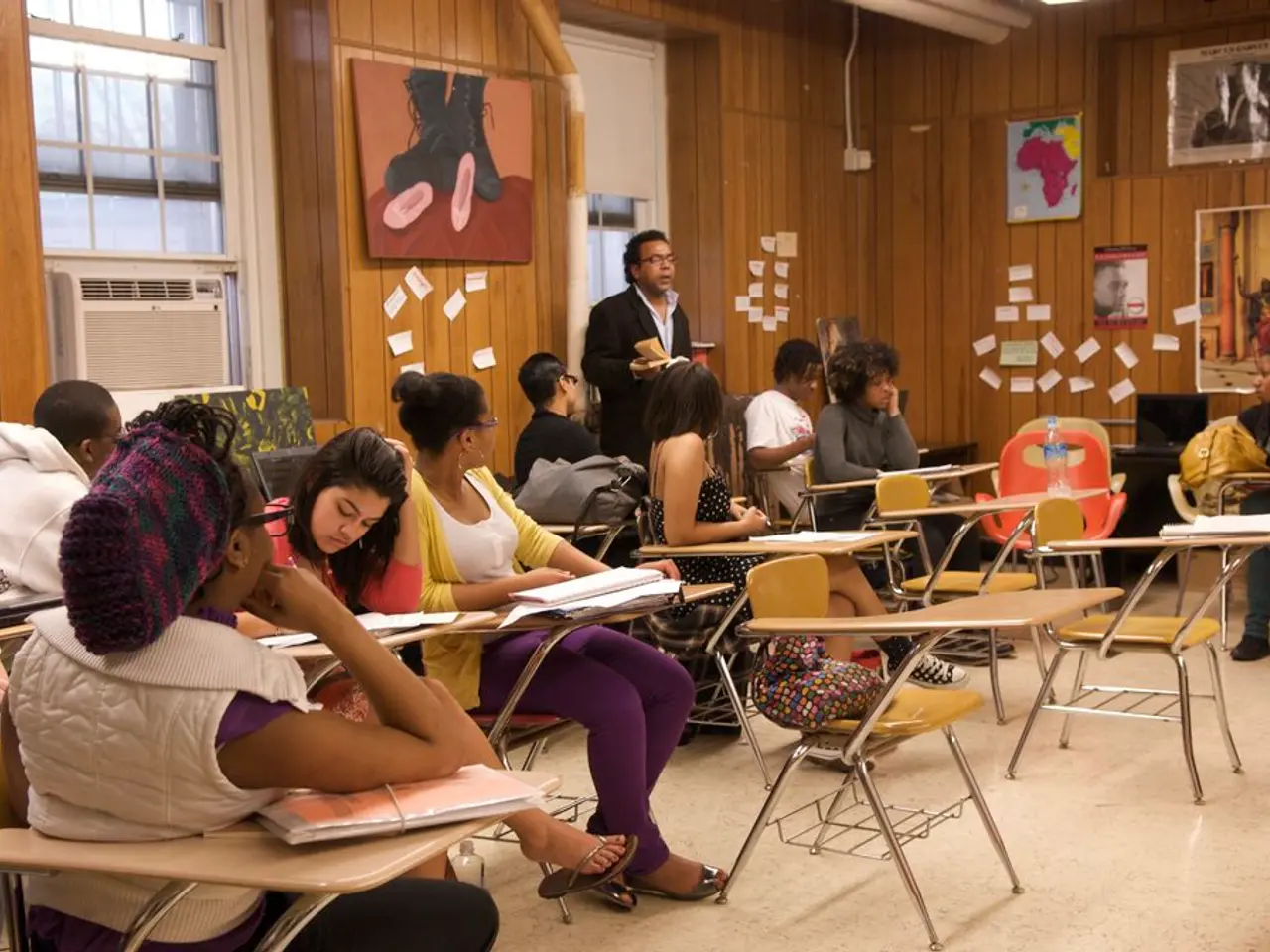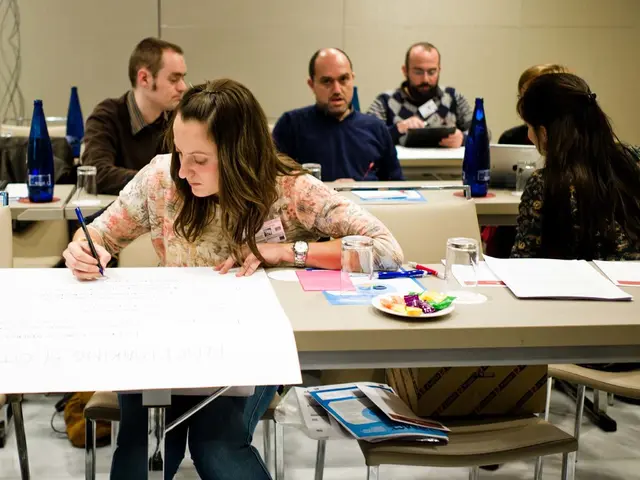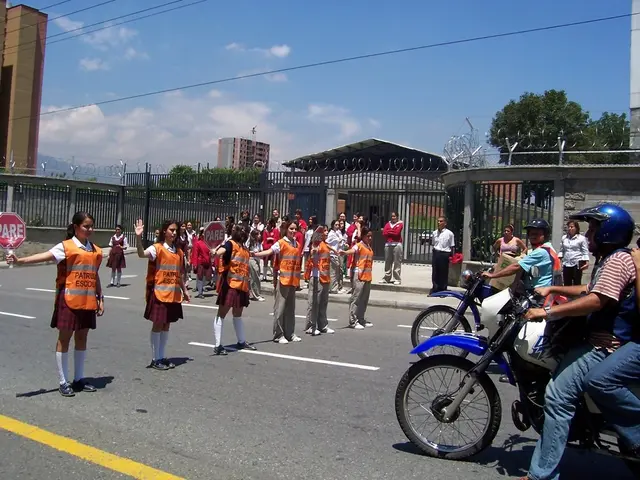Learner-centered Approach to Knowledge Acquisition: Four Key Processes Explored
In classrooms, workplaces, and digital learning environments, social learning theory plays a crucial role in promoting learning and behaviour change. This framework, which emphasises observation, modelling, peer interaction, and reinforcement, offers a powerful approach to teaching, training, and self-improvement.
In classrooms, teachers can serve as positive role models, encouraging peer learning through group work and discussions. Techniques like social stories and role-playing are used to teach social skills, especially for children with diverse needs. These strategies help students learn by observing others, imitating behaviours, and receiving feedback, thereby enhancing comprehension and social development [3][4].
In workplaces, social learning supports skill development by fostering environments where employees observe others solving problems, collaborate on projects, and share knowledge through peer networks. This method helps learners practice real-world skills such as leadership and communication in context, bridging theory and practice while sustaining engagement beyond formal training sessions [2].
In digital learning environments, modern cloud-based and collaborative platforms enable social learning through features like discussion boards, video demonstrations, live sessions, peer feedback, and real-time collaboration tools. These digital tools replicate social interaction and observation online, making learning interactive, continuous, and scalable [2].
Underlying these applications is the core idea that people learn not only through direct experience but significantly through watching others’ behaviours and consequences in social contexts. Reinforcement, both intrinsic and extrinsic, and modelling of positive behaviours are essential mechanisms for effective social learning across all these settings [3][5].
Effective application involves creating opportunities for observation and imitation of positive role models, encouraging peer-to-peer interaction and collaborative problem-solving, using real or simulated social contexts for learning practical skills, providing ongoing feedback and social reinforcement, and utilising digital tools to facilitate engagement, observation, and dialogue beyond physical settings.
Misconceptions about social learning include the idea that it is the same as direct learning, that it only happens in children, and that reinforcement isn't necessary. However, understanding social learning theory can create highly effective and engaging learning environments, and applying its principles in daily interactions can lead to significant learning and teaching opportunities.
Whether you're a teacher, manager, or an individual seeking personal growth, social learning principles can be a powerful tool for growth. Online learning platforms enable users to learn by observing peers, participating in discussions, and sharing knowledge. Role-playing activities are particularly effective in teaching social skills and conflict resolution. Intrinsic motivation, coming from personal satisfaction or enjoyment, and extrinsic motivation, driven by external rewards or incentives, both play a role in social learning.
References:
[1] Bandura, A. (1977). Social learning theory. General psychology: A systematic and integrated approach. New York: Freeman.
[2] Bandura, A. (1986). Social foundations of thought and action: A social cognitive theory. Prentice-Hall.
[3] Bandura, A., & Walters, R. H. (1977). Social learning theory. In D. G. Lindzey & E. Aronson (Eds.), The handbook of social psychology (Vol. 1, pp. 113-180). Random House.
[4] Bandura, A., & Schunk, D. H. (1981). Self-efficacy: Toward a unifying theory of behavioral change. Psychology, 24(6), 623-684.
[5] Bandura, A., & Locke, E. A. (2003). A social cognitive theory of goal setting and task performance. Journal of clinical psychology, 59(4), 575-588.
- In classrooms, teachers can use social learning principles by encouraging group work and discussions, thereby allowing students to learn by observing each other, imitating behaviors, and receiving feedback.
- Integrating social learning tips into a project at work could help employees foster an environment where collaboration on tasks and sharing knowledge through peer networks enhances skills like leadership and communication.
- For career advancement, observing positive role models and participating in ongoing discussions related to one's field of study can contribute to continuous learning and self-improvement in education-and-self-development settings.
- Notice that social learning is not just about direct experience; it significantly relies on observing others' behaviors and consequences in social contexts, which are essential mechanisms for effective learning across various environments.
- To ensure effective learning, educators and managers should create a supporting environment that incorporates both intrinsic and extrinsic motivation, reliable reinforcement mechanisms, open dialogues, and the utilization of modern learning platforms to facilitate peer interaction and knowledge sharing.




